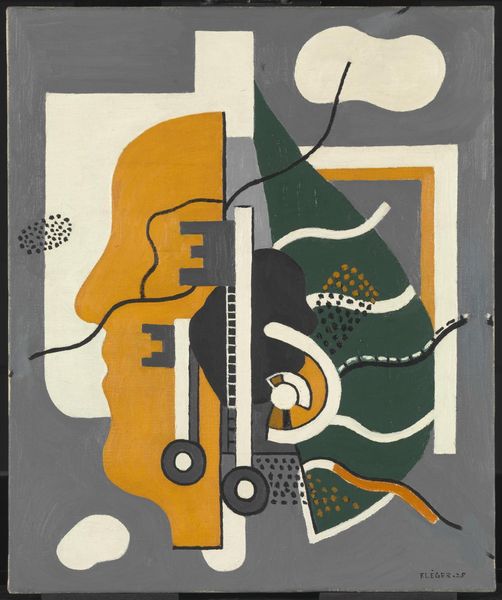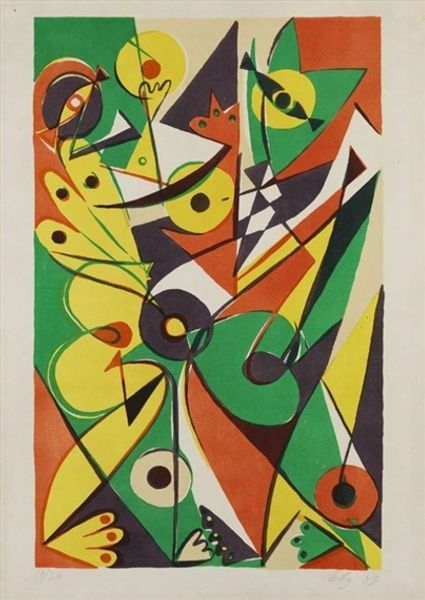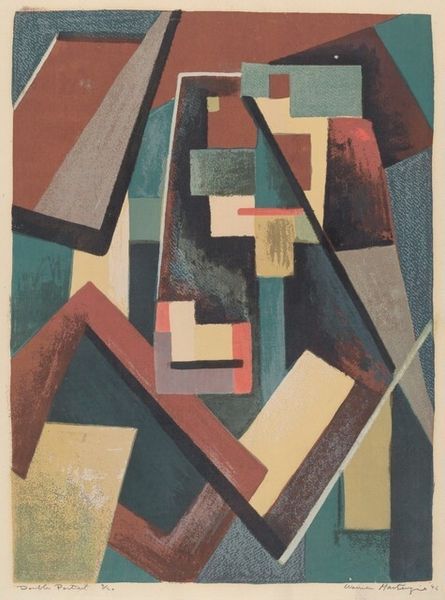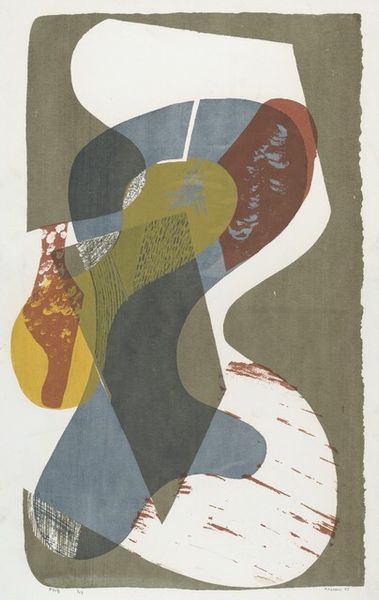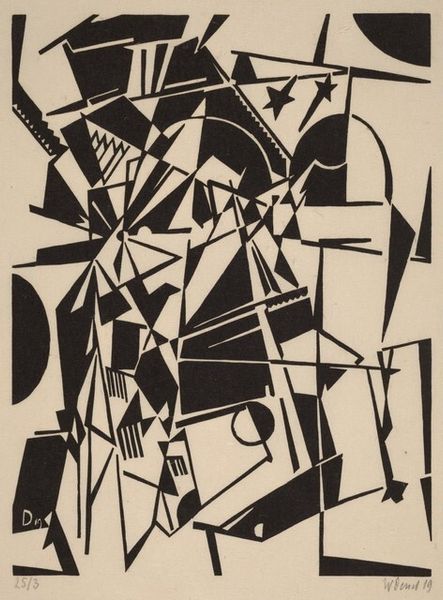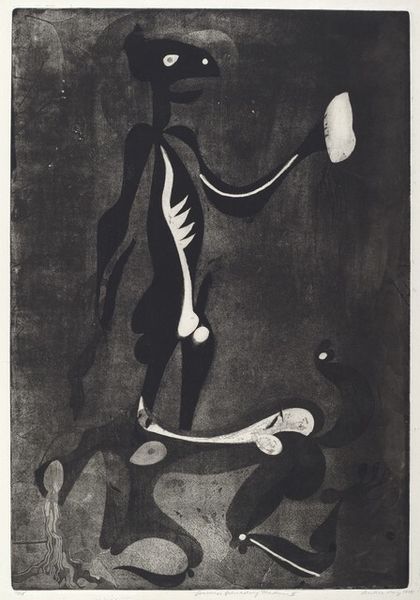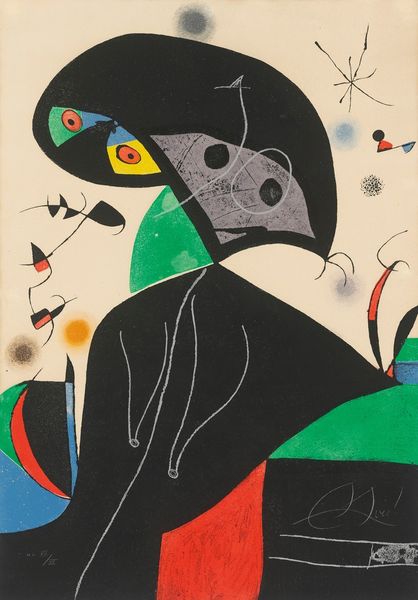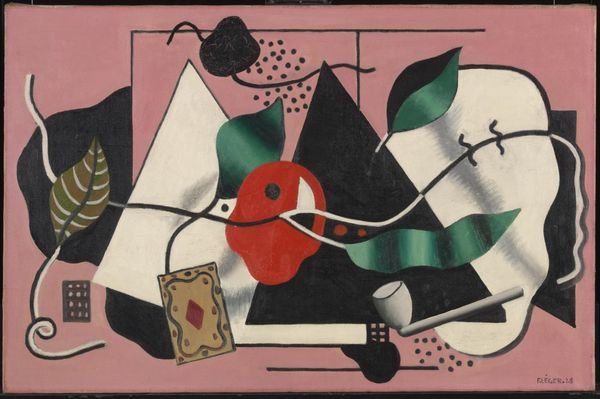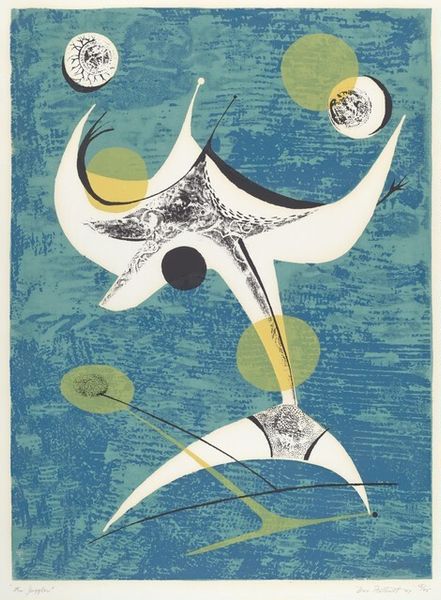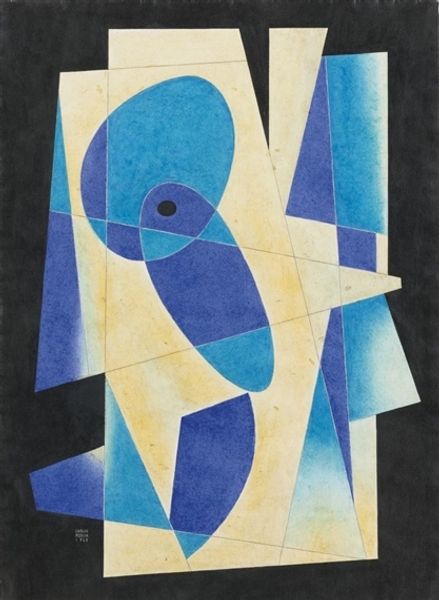
#
abstract-expressionism
# print
#
pop art
#
form
#
abstract pattern
#
geometric-abstraction
#
abstraction
#
line
Dimensions: plate: 48 × 32 cm (18 7/8 × 12 5/8 in.) sheet: 54 × 38.1 cm (21 1/4 × 15 in.)
Copyright: National Gallery of Art: CC0 1.0
Curator: Look at this amazing piece! Ernst Wilhelm Nay's "Albaran," from 1951. Editor: My first thought? It's a constellation of subconscious anxieties, all sharp angles and watching eyes. Curator: The piece definitely pulls you in. As an abstract expressionist print, the geometric forms and varied color fields feel like a deliberate emotional language. It really exemplifies a post-war need for visual catharsis, don't you think? Editor: Absolutely. You feel Nay's grappling with the anxieties of his time through abstraction, but it feels intentional too. These aren't just chaotic brushstrokes but symbols wrestling with shadows. I notice these disembodied eyes that seem to be everywhere. There is always somebody watching you and perhaps something that needs to be seen. I love how it incorporates these little playful pop art dots at the end of thin lines, a hint of levity. But there is this sense of always being surveilled, it's inescapable in the composition. Curator: Yes, and note the brown tones paired with softer blues and greens, creates such an earthy yet unsettling harmony, doesn't it? Also, the overlapping planes feel like the layering of memory and emotion. Is Nay trying to process Germany's complex emotions after the war, these colors seem to communicate some underlying emotional conflict. Editor: Definitely, but let’s not just look at the artist. Post-war, the masses were still suffering from psychological damages while being gaslighted with national narratives of “moving on.” So I can only imagine these hard sharp shapes represented a social dissatisfaction being artistically created to give shape and therefore voice to societal anxiety. It truly sits within you once you reflect on these layers of shapes, color and cultural moments. Curator: Indeed. I see this too, and "Albaran" has now settled even deeper within me, thank you. Editor: Art finds itself living, once it has lived through us.
Comments
No comments
Be the first to comment and join the conversation on the ultimate creative platform.
